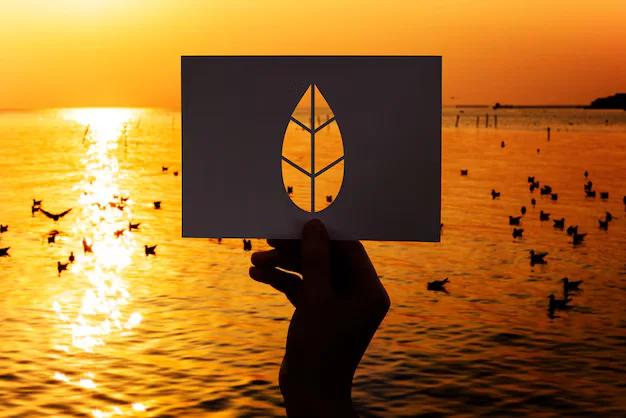INTRODUCTION:
Nature has always served as humanity’s greatest source of inspiration. From ancient architectural marvels to modern technological innovations, natural patterns have influenced design choices across cultures and industries of PATTERNS IN NATURE. These patterns—whether found in the symmetry of a butterfly’s wings, the spirals of a seashell, or the fractals of a tree’s branches—are deeply ingrained in human consciousness and aesthetic sensibilities. They connect us to the environment, offering a sense of familiarity, harmony, and balance.
Designers, architects, and artists consistently draw from these organic forms to create objects, structures, and experiences that resonate emotionally with people. The psychological connection to nature’s patterns is not only about beauty but also functionality and efficiency. Biomimicry, for instance, uses nature’s principles to solve human challenges, reflecting how deeply nature’s designs influence modern innovation. This article explores how patterns in nature inspire human design choices, why they feel inherently pleasing, and how they contribute to creating products, spaces, and experiences that feel both functional and beautiful.
THE SCIENCE BEHIND NATURAL PATTERNS AND HUMAN PERCEPTION:
Why Humans Are Drawn to Natural Patterns:
Our brains are naturally wired to recognize and respond to patterns. This evolutionary adaptation helped early humans identify food sources, recognize threats, and navigate their environments. These ingrained recognition systems remain with us today, explaining why specific natural patterns are perceived as comforting, harmonious, and aesthetically pleasing.
Studies in environmental psychology suggest that exposure to natural patterns reduces stress and promotes a sense of well-being. For instance, fractal patterns—repeating geometric forms found in snowflakes, trees, and river networks—are associated with feelings of calm and relaxation because they mirror the structures we encounter in the natural world.
The Role of Symmetry and Proportion in Design:
Symmetry and proportion, fundamental elements found in nature, heavily influence human perception of beauty. Symmetrical designs are often perceived as balanced and harmonious because they reflect biological markers of health and vitality in living organisms. This explains why symmetrical faces or balanced architectural structures are often considered more attractive.
The Golden Ratio, a mathematical relationship frequently observed in nature, also plays a significant role in design. Found in the spirals of seashells, sunflower seed arrangements, and even galaxies, this ratio creates aesthetically pleasing proportions that are used in art, architecture, and product design to create visually balanced and harmonious compositions.
COMMON NATURAL PATTERNS THAT INFLUENCE DESIGN CHOICES:
Fractals and Their Impact on Design:
Fractals are complex patterns that repeat themselves at different scales, creating visual interest and depth. Found in tree branches, river systems, and lightning bolts, fractals have become a source of inspiration for architects, artists, and digital designers. These patterns offer both aesthetic beauty and practical advantages, such as energy efficiency in architectural designs inspired by branching systems.
Designers often incorporate fractals to create intricate, layered visuals in fashion, architecture, and digital art. For example, modern skyscrapers sometimes mimic fractal patterns in their structural framework to optimize energy use while creating visually striking silhouettes.
Spirals and Their Symbolism in Design:
Spirals are one of the most recognizable patterns in nature, appearing in everything from seashells to galaxies. They symbolize growth, expansion, and movement, making them a powerful visual tool in design. The Fibonacci spiral, closely related to the Golden Ratio, frequently appears in graphic design, logos, and architecture due to its inherent balance and harmony.
In product design, spirals often influence the shape of objects like vases, jewelry, and furniture, creating a sense of flow and continuity. A notable example can be found in engagement rings, where spiral-inspired settings elegantly wrap around the gemstone, adding an organic and symbolic element that reflects infinity and eternal love.
THE FUNCTIONALITY OF BIOMIMICRY IN DESIGN:
How Nature Solves Human Design Challenges:
Biomimicry is the practice of imitating nature’s designs and processes to solve human problems. By studying patterns in nature, scientists and designers can create solutions that are both innovative and efficient. Examples of biomimicry include airplane wings inspired by bird flight patterns and self-cleaning surfaces modeled after lotus leaves.
These nature-inspired designs often outperform traditional solutions because they have been refined through millions of years of evolution. Biomimicry not only enhances product performance but also promotes sustainability by reducing waste and energy consumption.
Examples of Biomimicry in Everyday Design:
Biomimicry has led to groundbreaking innovations across various industries, including:
- Architecture: Buildings designed with ventilation systems modeled after termite mounds, which regulate temperature naturally.
- Transportation: High-speed trains shaped like a kingfisher’s beak to reduce noise and improve aerodynamics.
- Materials Science: Fabrics inspired by shark skin that reduce drag and increase efficiency in competitive swimwear.
These innovations demonstrate how nature’s patterns not only influence aesthetics but also inspire practical solutions for everyday challenges.
THE CULTURAL AND SYMBOLIC SIGNIFICANCE OF NATURAL PATTERNS:
How Different Cultures Interpret Nature-Inspired Designs:
The influence of natural patterns on design extends beyond aesthetics; they often carry deep cultural and symbolic meanings. In Eastern cultures, for instance, the circle (or enso in Zen Buddhism) represents enlightenment, wholeness, and the cyclical nature of life. Similarly, Indigenous art frequently incorporates patterns derived from the natural world, reflecting a spiritual connection to the environment.
In Western traditions, floral patterns have long been associated with beauty, fertility, and renewal. These cultural associations influence fashion, interior design, and even branding, making natural patterns a powerful tool for conveying specific emotions and messages.
The Spiritual Connection Between Humans and Natural Designs:
Throughout history, humans have viewed patterns in nature as symbols of divine order and cosmic harmony. Sacred geometry, which studies patterns and shapes found in nature, is often used in religious art and architecture. Cathedrals, mosques, and temples worldwide incorporate geometric patterns to represent balance, harmony, and the universe’s interconnectedness.
These spiritual connections explain why nature-inspired designs continue to resonate deeply with people. They remind us of our place within the natural world and foster a sense of unity and tranquility.
APPLICATIONS OF NATURAL PATTERNS IN MODERN DESIGN INDUSTRIES:
Architecture Inspired by Nature’s Efficiency:
Architects often look to nature for inspiration when designing buildings that are both beautiful and functional. Structures like the Eden Project in the UK, with its geodesic domes inspired by pollen grains, demonstrate how natural patterns can enhance energy efficiency while creating visually striking spaces.
Biophilic design, a concept that integrates natural elements into built environments, is gaining popularity in urban planning. Features like green walls, natural light, and organic forms help reduce stress and improve well-being, reflecting nature’s profound influence on modern architecture.
Fashion and Textiles That Mimic Nature’s Patterns:
Fashion designers frequently incorporate patterns found in nature, from floral prints to fabric textures that mimic animal skins. Beyond aesthetics, technological advancements are enabling textiles to replicate nature’s functionality—such as water-repellent fabrics inspired by lotus leaves or temperature-regulating materials modeled after polar bear fur.
The use of organic patterns in fashion not only enhances visual appeal but also connects consumers with nature, reinforcing themes of sustainability and eco-consciousness. As environmental concerns grow, many fashion brands are embracing nature-inspired designs as part of their commitment to ethical and sustainable practices.
NATURE’S INFLUENCE ON TECHNOLOGY AND INNOVATION:
How Natural Patterns Drive Technological Advancements:
Nature-inspired designs have contributed to significant advancements in technology. Fractal antennas, for example, use self-repeating patterns found in nature to improve signal reception in smartphones and other wireless devices. These designs offer better performance in smaller spaces, reflecting how natural efficiency can enhance modern technology.
Another example is the development of solar panels that mimic the structure of sunflower petals, which track the sun’s movement for optimal energy absorption. This innovation highlights how understanding natural patterns can lead to more sustainable technological solutions.
Nature-Inspired User Interface Design:
In the digital world, nature-inspired patterns influence user interface (UI) and user experience (UX) design. Designers often draw from organic forms and natural color schemes to create intuitive, calming interfaces. Gradients, smooth transitions, and circular navigation menus are examples of how nature’s influence shapes the look and feel of digital spaces.
These design choices help users feel more comfortable and engaged, improving the overall user experience. By incorporating nature’s patterns into technology, designers can create products that feel both innovative and emotionally resonant.
THE FUTURE OF NATURE-INSPIRED DESIGN:
Sustainability and Eco-Conscious Design Trends:
As environmental concerns continue to shape consumer preferences, nature-inspired designs are becoming increasingly important in promoting sustainability. Designers are prioritizing eco-friendly materials, energy-efficient solutions, and biodegradable packaging inspired by natural processes. This shift reflects a growing recognition of the need to align human innovation with the principles of nature.
Brands that embrace sustainability are also incorporating natural patterns into their marketing and branding strategies. By using organic shapes, earthy colors, and eco-friendly materials, companies can communicate their commitment to environmental responsibility and appeal to conscious consumers.
The Role of Artificial Intelligence in Mimicking Nature:
Advances in artificial intelligence (AI) and machine learning are enabling designers to replicate nature’s complexity with greater precision. AI algorithms can analyze and recreate natural patterns, generating intricate designs for use in architecture, fashion, and digital art.
In the future, AI-driven design tools could help create more sustainable solutions by optimizing resources and reducing waste. These innovations represent a new frontier in nature-inspired design, blending human creativity with the power of technology to address global challenges.
CONCLUSION:
Patterns in nature have long influenced human design choices, shaping the way we create, innovate, and connect with the world around us. From fractals and spirals to biomimicry and cultural symbolism, these natural patterns provide both aesthetic inspiration and practical solutions for modern challenges.
As sustainability and technological innovation continue to drive design trends, the influence of nature’s patterns will remain a powerful force in shaping the future of architecture, fashion, technology, and beyond. Whether through the elegant spirals of rings or the efficiency of biomimetic architecture, nature’s designs will continue to inspire creations that are both beautiful and functional, reinforcing our deep connection to the natural world.







